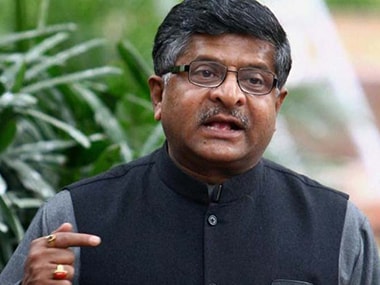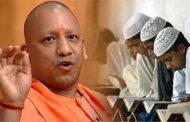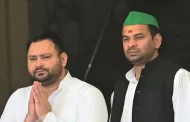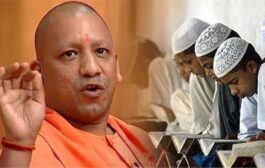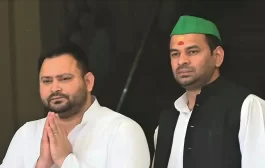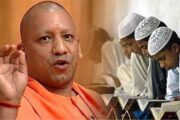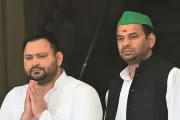By inverting the top down thinking on government formation, policy and planning, Mamata Banerjee reflects the confidence that regional parties have gained over the past 40 years.

Political parties in India are permanently working on managing representation of all the different interests that reflect the diversity of the complex social, economic and political life of the people. This is true of the big national parties, including the Grand Old Congress as well as the younger Bharatiya Janata Party (BJP) and the Left, led by the Communist Party of India (Marxist) [CPI(M))]. Regional parties are no less absorbed in managing the stresses and strains of the heaving mass of interests and fragments of social, economic and political groups.
The just conceived alliance at the United India Rally in Kolkata, in that sense, is no different from the big national parties and their coalition partners, all of whom struggle to balance the interests within and among constituencies of interests and pressures.
The change in focus from a ‘federal front’ to what we shall call the ‘United India Alliance’ (UIA) is significant in that the first description reeked of the rag tag ‘Third Front’ and its past; the UIA, in contrast, is the maturing of coalitions by regional parties. It is an assertion as well as a claim to a political space alongside the National Democratic Alliance led by the BJP or the United Progressive Alliance led by the Congress.

The future of Indian politics
It is a signal that future politics in India is going to be not only coalitions, which it already was what with the NDA and the UPA, but also, increasingly bipolar. The UPA is Congress led; UIA is equally evidently led by the regional parties, representing the diversity of politics in India. The NDA, therefore is now the “Other.”
The mega rally of January 19, when the UIA was unveiled was a collective of 23 parties and 30 leaders. It was not a ramshackle, hastily put together ‘front’; it is a confident partnership of equals, representing the grassroots that has shared experiences and memories from 1977 to the present.
It therefore has an enormous capital of what brings parties together, what creates stresses and strains, what causes failures and how to embrace and avoid problems that can take such large coalitions to fail. The message from UIA, delivered by the only former Prime Minister present at the rally, H.D. Deve Gowda, was that this was a coalition that has a purpose and plans to remain in power for the full term of five years. And, as Mallikarjun Kharge summed it up, it has to be an all hands on deck exercise, not a meeting of minds and hearts.
The talent or capability index of the UIA is, in fact, staggering. Separately, the parties that make up the coalition have been successful in governance in ways that have made their programmes or schemes for development models that other states and the Centre has appropriated, re-designed and re-named, and unrolled across the country.
The most obvious example is the NREGA which was based on a model of work for hard pressed farmers during the worst of times. Bicycles for the girl child was designed and tested in Bihar; farmers crop insurance was designed and tested in the south, along with a host of schemes on health and education focusing on outcomes, rather than meaningless targets. Even national legislation on property rights of women adopted in 2005 was based on radical changes that were legislated by the southern states.
And, the UIA has plenty of people who have served in various coalition governments at the Centre over the decades. By that reckoning, Narendra Modi was a novice when he was hoisted by the BJP-Rashtruya Swayamsevak Sangh as the poster boy of development and great Prime Minister material in 2013-2014. In his earliest speeches, Modi in fact frequently promised that he would turn India, particularly Uttar Pradesh, into a Gujarat, which had achieved middle income status on the global index during his tenure as chief minister. At the rally, the point was made over and over again by the veterans of the coalition, who have led their regional parties in the states and partnered with the BJP and the Congress at the Centre.
The marginalisation of the CPI(M)
It is more than likely that there will be more mega rallies on the model of the Kolkata Brigade Parade Ground one. The difference is that Kolkata has a history of playing host to similar rallies and political strategising during the heyday of the Left, after 1977. The conspicuous absence of the Left from the UIA is a sad but accurate index of the marginalisation of the Left, particularly the CPI(M), on what used to be its home turf, described variously in ways that can be summarised as the invincible red bastion of West Bengal.
The marginalisation of the Left is not only because Mamata Banerjee, as host of the event, would not invite the CPI(M)’s West Bengal leadership, both because she has a visceral dislike of the party in the state and it remains her strongest rival and enemy. The CPI(M) has increasingly moved away from large and diverse political platforms, even though it did join the mega rally at H.D. Kumaraswamy’s swearing in ceremony at Bengaluru and has instead concentrated its efforts on rebuilding its core bases with peasants and the working class. Partly its own recent history of losses in elections in West Bengal and Tripura, as also deliberate decisions, have moved the CPI(M) out of the league of king makers, a role that it played in full measure in 1996, in 2004 when it underwrote the Congress-led UPA and in the 1980’s.
The other reason why the Kolkata rally was the first and witness to the launch of the UIA is Mamata Banerjee. She has been working hard for almost two years now to set up and get the federal front idea up and running. The idea of one candidate-one seat was first proposed by Mamata Banerjee, as was the overarching logic of the UIA – as a partnership of equals of regional parties that not only represent the multiplicity of constituencies and interests, but also shape and deliver development and governance to the people. It was her assertion that makes the UIA different from the past coalitions of regional parties, irrespective of what is their basis.

Will Mamata Banerjee be the PM?
Regions are where the people live; therefore, Banerjee’s simple but powerful message has been that regions have the highest stake in government formation at the Centre. It clearly resonated with the other parties, who responded to her overtures and the success of the Kolkata rally. By inverting the top down thinking on government formation, policy making and planning, Banerjee reflects the confidence that regional parties have gained through their experiences over the past 40 years.
Does that make Mamata Banerjee the strongest claimant to being the prime minister in a UIA led government? It probably does. Apart from the veterans of the coalition wars in India since 1977 – people like Farooq Abdullah, Deve Gowda, Sharad Pawar, Sharad Yadav – it is Banerjee who has the longest experience in governance at the Centre, having become a minister in the Narasimha Rao government in 1991. The unlikeliest of support for her claims is from the BJP; its West Bengal leader Dilip Ghosh, who never misses a chance at attacking Mamata Banerjee, is on record that she deserves to be prime minister, but not till 2024.
The only problem is that Bahujan Samaj Party’s leader Mayawati has declared that the next PM would be from UP, which makes it a contest between two formidable leaders, both women. What matters most, if the UIA defeats the BJP, and the Congress is not in a position to lead the UPA in forming a government, are numbers.
In the current Lok Sabha, the Trinamool Congress is the second largest opposition party; this is a position that it plans to hold on to by winning at least one more than the 34 it won in 2014. Given that neither Mayawati’s party nor the Samajwadi Party are likely to contest more than 37 seats each in UP, the BSP or its ally can win only less numbers of seats than the Trinamool Congress. This makes Mamata Banerjee a front runner.
Having started off as a West Bengal leader serving at the Centre, Mamata Banerjee has now become a national leader with a base in the state. There is irony in this transformation; it mimics Jyoti Basu’s trajectory in government formation at the Centre post-1977, including the moment of historic blunder.
Unlike the CPI(M), Banerjee for all her tenacity, stubbornness and uncompromising stands is far more adroit in managing her ambitions. She will be a king maker, that much is certain. The rest is speculation.
source: TheWire

